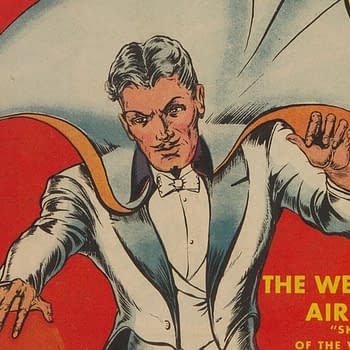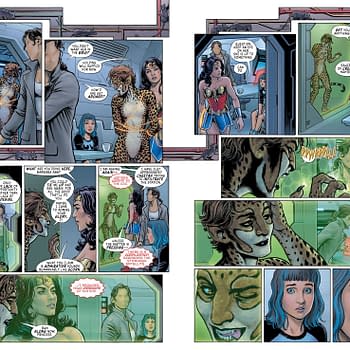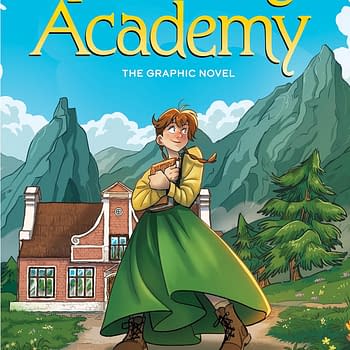Posted in: Comics, Recent Updates | Tagged: Andrew Waugh, Brian Evenson, david b, Frank Santoro, Incidents in the night, Luke Pearson, Nobrow, Nobrow 8, Picture Box, pompeii, Sam Chivers, Sammy The Mouse, Sarah Evenson, Small Press Expo 2013, Tom Kaczynski, Uncivilized Books, World Map Room, Yuichi Yokoyama, Zak Sally
The SPX Reviews – Nobrow 8, Sammy The Mouse, Incidents in the Night, Pompeii, World Map Room
Running around to a sudden storm of autumn comics events has its drawbacks, mainly in finding a minute to sit down with all the great comics you've managed to pick up along the way. Small Press Expo landed me with an entire bin to wade around in, and so this is the first of a few round-ups of what I found there. These books are from Nobrow, Picture Box, and Uncivilized Books, and represent such a wide swath of radical visual concepts and ideas that it confirmed for me the vitality of small presses in changing the way we see comics, both in content and form.
From Nobrow, we have the new anthology in the series Nobrow 8, whose theme this installment is "Hysteria". The contributors took that theme quite literally, and it was a wild way to start reading the SPX comics I'd accrued. If you haven't read a Nobrow anthology before, they are large format and printed on high quality matte paper, which lends a certain shocking quality to the bold punkish color themes they tend to present. They are designed in "flip" format so that you read from one of the anthology's two covers, reach a mid-point, flip, and start over from the reverse cover. Half of the book is illustration work that blurs the line between work that needs to be accompanied by words to have full impact, and work that has a tale to tell of its own.
In Nobrow 8, the illustration work gives the impression of snapshots, extremely short stories that do their damnedest to leave you hanging in the middle of a tale being told. Taken as a whole, the illustrations give a gallery effect hitting similar notes in very different ways, and are followed by a thumbnail guide for attribution. From religious hysteria, to media frenzy, and the kind of worship that technology inspires, there's a level of seriousness to many of the conveyed messages in the illustrations, but expect many cute animals running amok too. My favorite is "hellish, giant, creepy clown against the spacemen/deap sea divers" (my title) by Sam Chivers.
The comics in Nobrow 8 take you deep into psychological realms in keeping with the "hysteria" theme, but like any good anthology, posing the subject matter gives the artists an opportunity to display for the record the virtually endless variety of concepts a single word can prompt. Color plays a strong role, here, too, in conveying atmosphere. Luke Pearson's story begins with the text, "I remembered that one day I would be dead" and is etched out in livid greens that are isolating, almost chemical in feel. Andrew Waugh's "Aaargh" makes us rethink giant red monsters and Zack Soto's Kaiju-like attacks against robots in a city of the mind is rivetting. But there's plenty of realism in the comics, also, and that leaves room for even more disturbing territory. One the whole, the anthology is darkly hallucinatory, and very hard to put down whichever cover you read from first.
Uncivilized Books presents a work by the acclaimed French artist David B. in translation by Brian and Sarah Evenson, and lavishly designed by Tom Kaczynski in hardback format, Incidents in the night, volume 1. This is another work that takes a journey into the mind, and into a dreamscape, but surfaces into perceived "realism" at different points to thread the narrative together. In it, central character David B. encounters a book, "Incidents de la nuit", a volume among many, written by Emile Travers in the 19th centiry, and goes on a feverish quest to locate the other volumes through dreams, stories, and Parisian bookstores.
In a vertiginous swirl, he encounters faceless and book-faced beings, creatures from mythology, gods and monsters, as well as the Angel of Death for good measure. The artwork is black and white, with a heavily wood-blocked feel, both stark and detail-laden. Panels topple into each other, draw back and remain fixed, lose their borders and reassert themselves as David B.'s journey takes on different forms. Dream, reality, and mythology are all up for grabs, as David B. accompanies Travers into the unknown. The book is a triumph of personal storytelling and memorable artwork, and a gem brought to the English-speaking world in this translation. But as David B. discovers, this volume is one among many, and so the tale continues in future volumes.
Also from Uncivilized Books, Zak Sally presents his "handmade books" under his own imprint, La Mano, in Sammy The Mouse, Books 1 and 2. Sammy is a series that draws on comic strip and early comic tradition, with a heady injection of underground comics sensibilities. Sammy, who wants to "do nothing" but remain in his "hovel", lives in a world of strange friends, stranger events, and emotional mellais, and in his unexplained quests he takes up the role of everyman searching for some kind of basic meaning.
The slightly paranoid atmosphere, a justified paranoia given the unpredictability of events, wouldn't be amiss in a Kafka short story, and the inking and coloring on the books are so subtle and nuanced that there's a certain delicacy to its ridiculous and slapstick elements. Sammy lives in a universe that's so deeply subconscious that it feels like the detritus-laden, shadowy afterlife of independent comics itself, and there are David Lynchian touches behind Sammy's adventures, most evident in its overt simplicity. Sally says that Volume 2, in which Sammy digs down into a deeper underworld at the behest of an unknown power, is the "half-way" point in the series of graphic novels, so we can look forward to more, and perhaps greater explanation about the outcome of Sammy's grave-digging.
From Picture Box, Frank Santoro's Ignatz Award-nominated Pompeii deservedly made some waves in comics in its SPX debut. Santoro, as he explained on panels at the Expo, purposefully chose to take on an improvised approach to telling this story of pairs and triangles of lovers, including a famous artist and his apprentice, in the last days of Pompeii before the eruption of Vesuvius. To do that, he executed the entire graphic novel in pencils, choosing bolder lines for episodes that had a more direct emotional tone, and softer lines for dialogues between lovers, and conveys a touching sense of languor in human experience during "down times".
Santoro's pencils also suggest the dream-like mistiness of sea-scapes and capture sharper impressions of landscape and city streets. Pompeii is intentionally a "one draft" comic, and also an experiment that goes against the heavily inked comics tradition of the mainstream. Santoro questions what the essentials should be in creating a visual narrative, breaking out of panels as well as inks, and seems to get closer to conveying emotion to an unprecedented degree. Pompeii is all about mood and invites reader participation in creating meaning against the backdrop of dramatic events that can only end in a hail of ash. Unsurprisingly, it was one of the most talked about comics of the Expo, and continues to garner critical praise for Santoro.
Picture Box couldn't have produced a more strikingly different book in comparison to Pompeii than in World Map Room by the Tokyo-based artist Yuichi Yokoyama, from its sharp inking to futuristic and industrial themes. It's presented in traditional Japanese right-to-left reading, with a pop-bright colored dustjacket and flexible covers which harmonize well with its heavily designed page layouts. There is room for interpretation in nearly every panel of World Map Room, and encourages the reader to tease out mysteries. Author's notes at the end of the book point out salient details that might easily go overlooked on first reading, including patterns and motifs on bookshelves and clothing. Two characters who seem both human and somewhat inhuman with mask-like faces pursue a strange, episodic journey through angled and shifting panels from watching airplanes at an airport, through a sea of clone-like city-dwellers, to arrive at the "world map room" where a library is for the most part a relic of older times, and into a zen-like garden where more inexplicable phenomena awaits.
The book suggests a future where perception is so altered by regimented ultra-modern life that a modern reader's perceptions are challenged not to find the behavior of the central characters and the environments they encounter alien. The sense of the unfamiliar that Yokoyama generates is part of his mastery of the form, including assaulting, ever-present sound effects, contrasting patterning on surfaces, and close-ups on emotionless faces. The stolid, emotionless effect that Yokoyama creates is part of the "gekiga" tradition that he purposefully espouses in this book, which sets the stage for future installments, as is the "suspicious" atmosphere he courts. The experience of reading World Map Room is similar to encountering a film like 2001: A Space Odyssey where the viewer/reader is encouraged to lose themselves in the terse uncertainty of the unknown as it unfolds. This is bound to be a unique experience for Western readers, who may not have encountered the "gekiga" tradition or Yokoyama before.
These are only a few of the impressive books that I encountered at SPX, with plenty still to explore, including books by other small presses and a host of indie "minis". But these works give a representative hint at the vast worlds that small presses and indie publishers are bringing into print from US and international creators. Whatever we have come to expect from comics in formal terms or in style, these books prove that it's time to reassess, year by year, who we consider masters of the medium and what they continue to say about the future of comics.
Hannah Means-Shannon is senior New York Correspondent at Bleeding Cool, writes and blogs about comics for TRIP CITY and Sequart.org, and is currently working on books about Neil Gaiman and Alan Moore for Sequart. She is @hannahmenzies on Twitter and hannahmenziesblog on WordPress. Find her bio here.






















